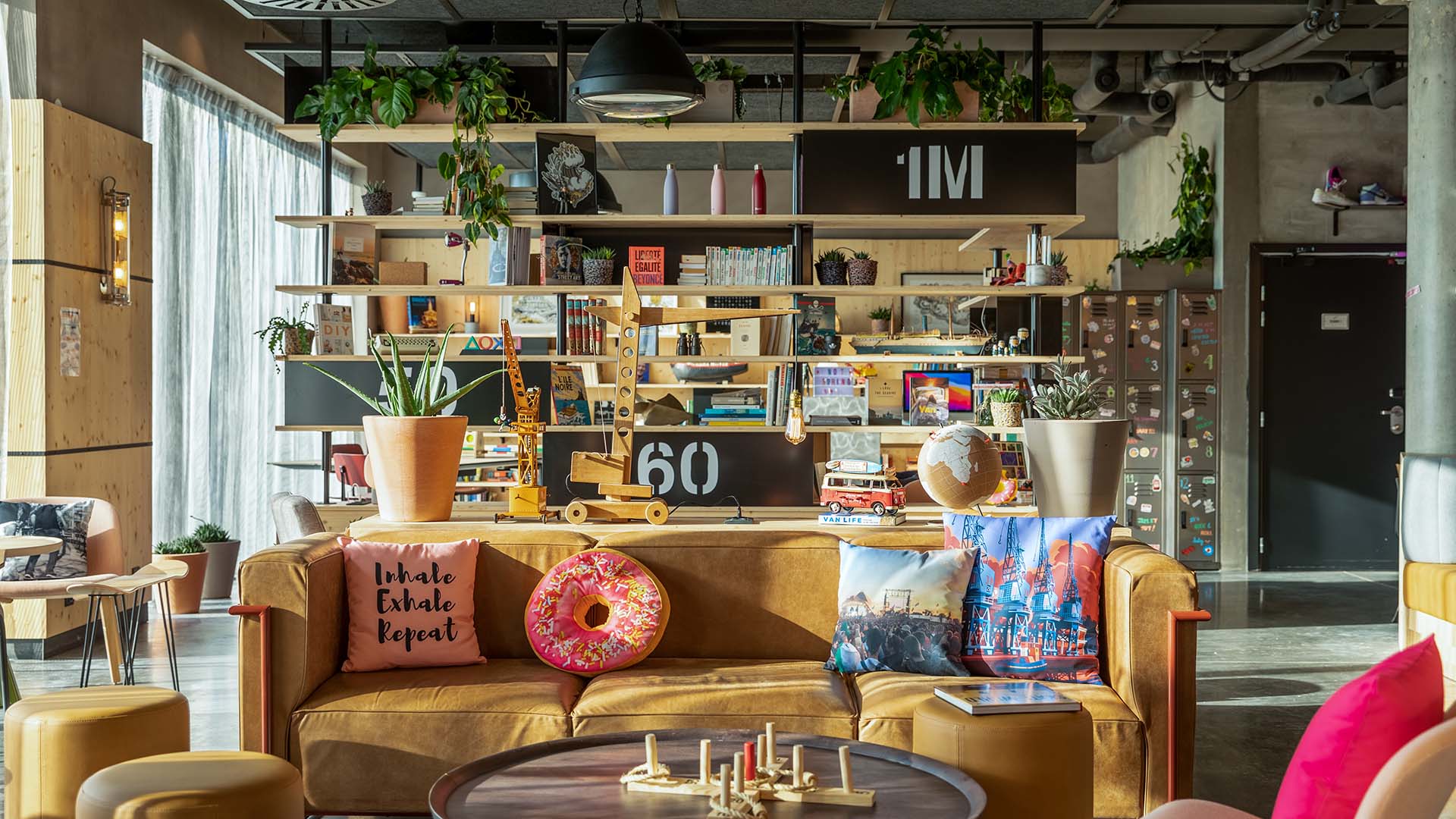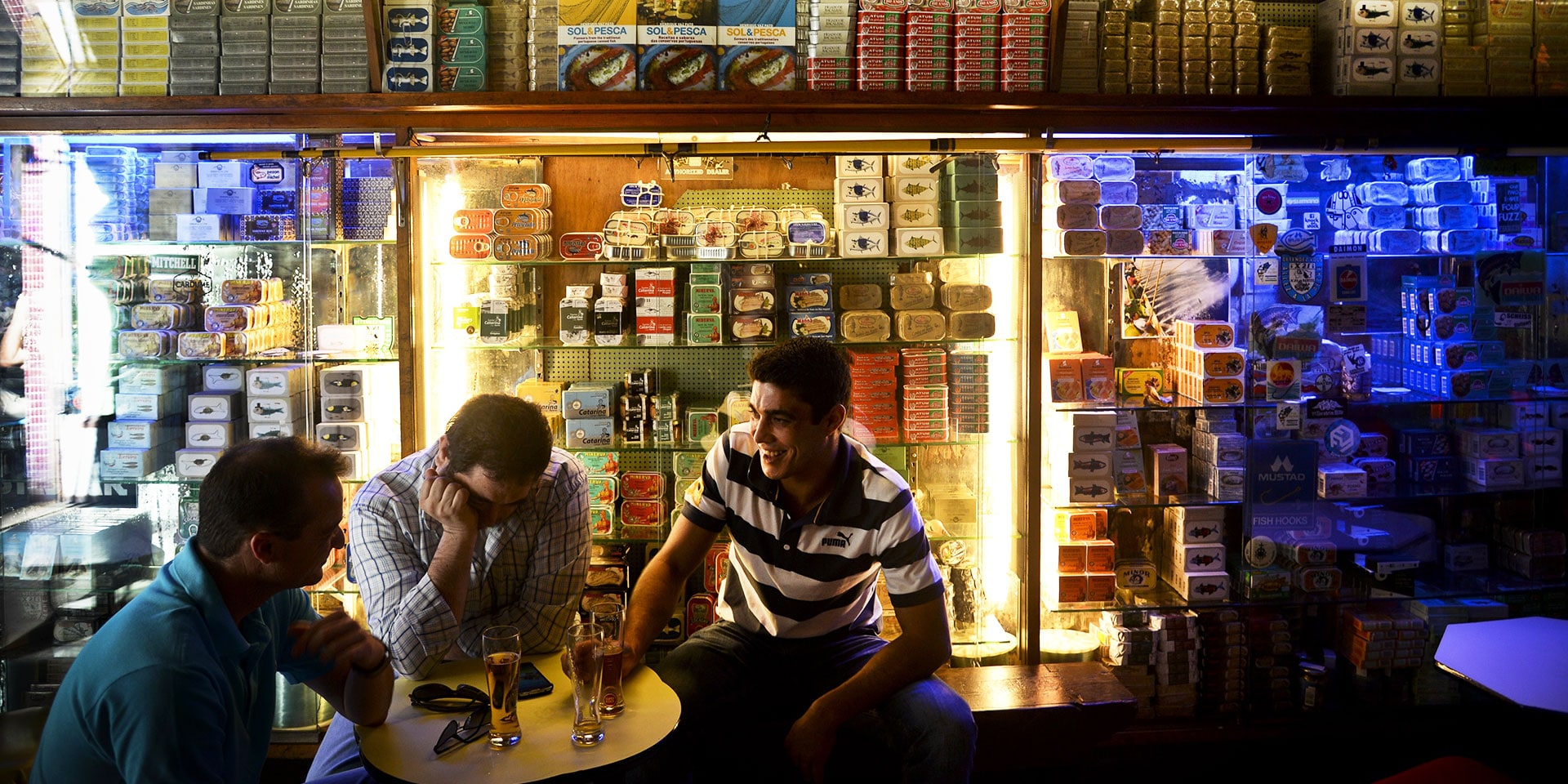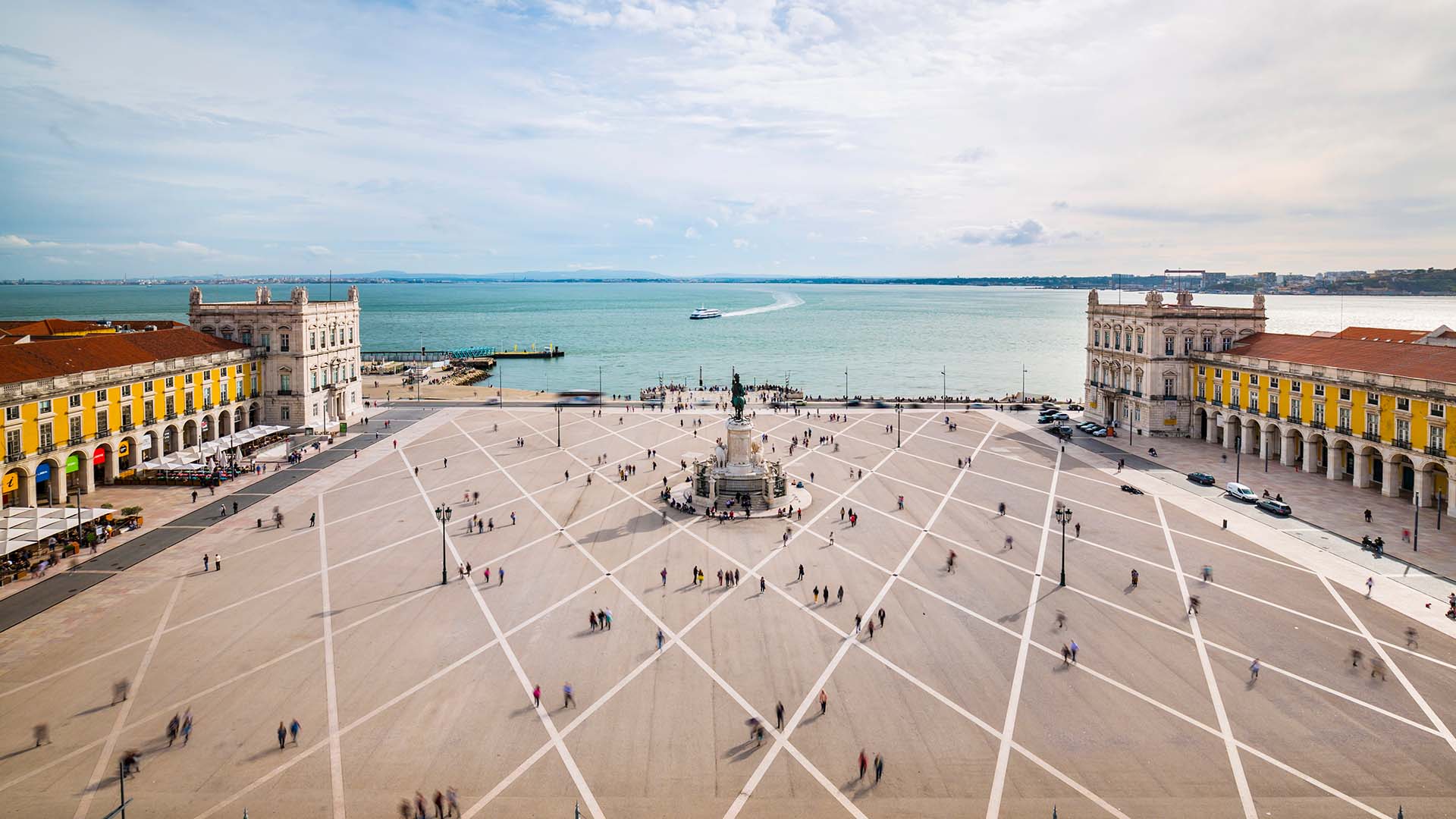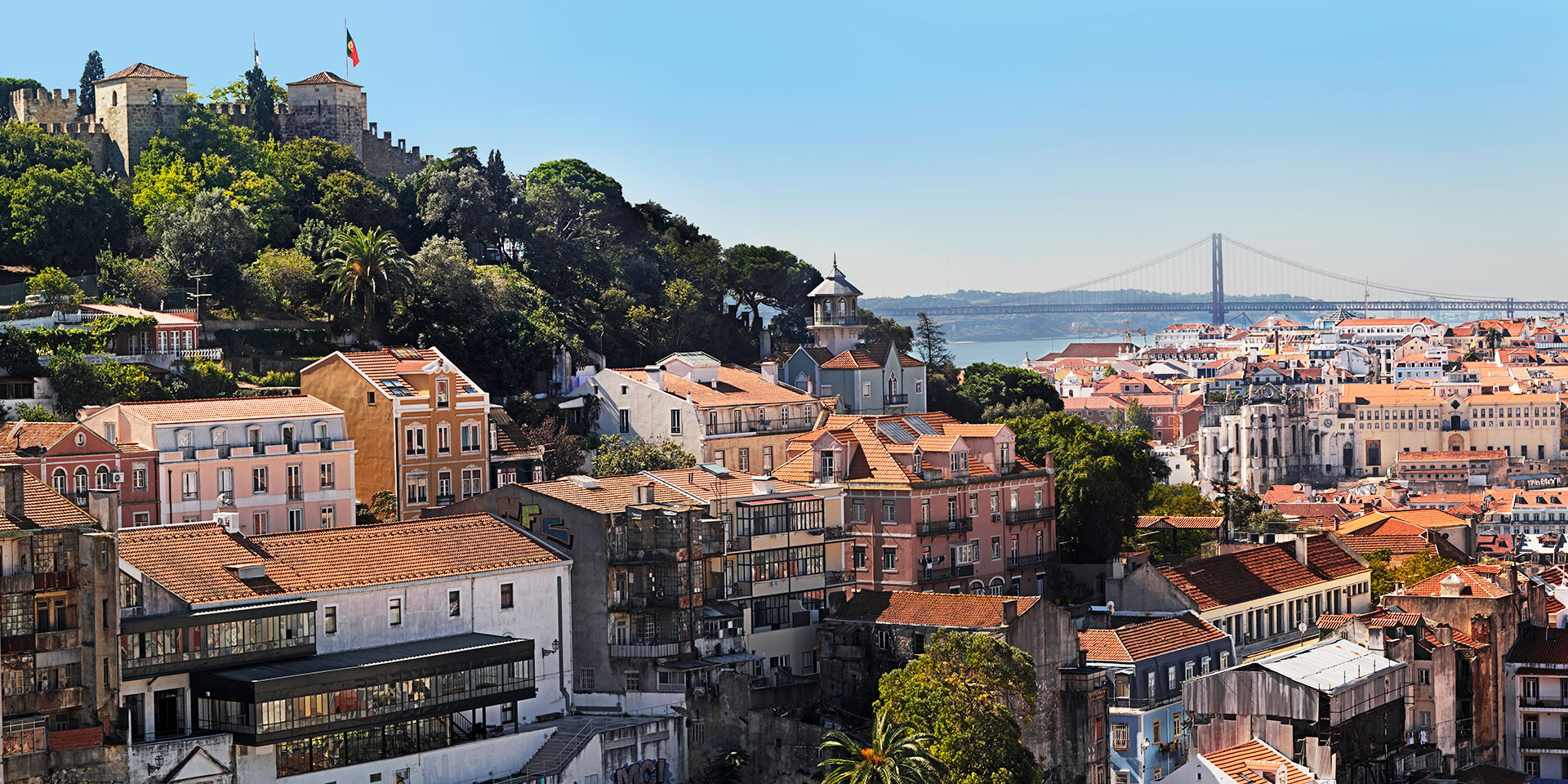
The Miradouro da Graça’s viewing platform gives you a near-panoramic view of the city. (Photo: Getty Images)
LisbonTram Your Way to the Mesmerizing Maze of Lisbon’s Historic (and Hip) Graça Neighborhood
By Tracey LindemanLisbon’s pre-Celtic, indigenous, Phoenician and Berber roots date back to at least the eighth century B.C., and today, the storied city still looks like a vestige of old Europe.
There’s no better place to start a trip to Lisbon than Graça, one of the oldest parts of the city. Known for its mazes of narrow and cobbled streets, terracotta roofs and painted-tile facades, Graça was built by Arabic migrants starting in the 11th century. Located in the historically gritty Alfama district, the neighborhood sits high atop Lisbon, offering some of the best views of the city below.
Start off your day by catching the 28 elétrico — the city’s famous yellow tram — in the direction of Prazeres from the Martim Moniz metro station about a half mile downhill from Graça. Hold on tight while the tram climbs the steep and winding roads up to Voz Operário, your stop in Graça and the starting point of the day’s itinerary.
Take in the Hilltop View
Graça offers spectacular vistas of Lisbon, and you’d be remiss to ignore them. Sample these breathtaking views — and get a few Instagram snaps of the terracotta roofs and deep-blue Tagus river — from one of the area’s miradouros, or observation decks.
Try Miradouro da Graça on for size. Ten minutes west of the Feira da Ladra by foot, the free viewing platform gives you a near-panoramic view of the city. If you want an even higher perch, head to the roofs of the São Vicente de Fora monastery or the Moorish medieval citadel of Castelo de São Jorge, two of the most important buildings in Lisbon.
Check Out the Feira da Ladra Flea Market
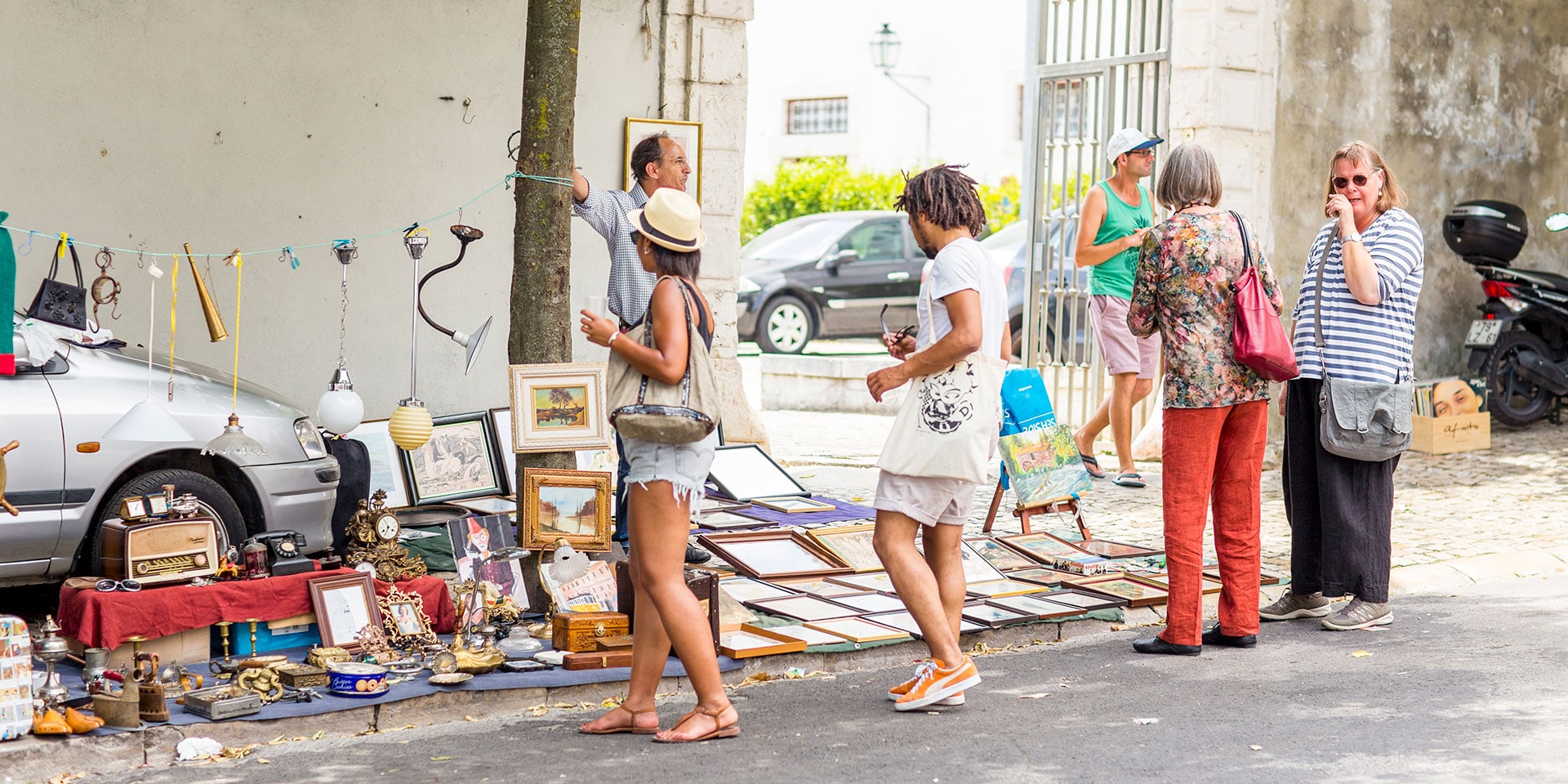
It’s a short walk from the tram stop to the Feira da Ladra, a sprawling outdoor flea market held every Tuesday and Saturday on Campo de Santa Clara. The market first sprung to life in the Middle Ages, and today you can meander through the maze of vendors, picking up everything from used silverware and old vinyl records to brand-new leather purses and hand-painted tiles (azulejos).
Even if you have no intention of buying anything at the market, the experience is worth an hour or two of your time. Just keep tabs on your wallet or purse — pickpockets are known to frequent the area.
Enjoy Local Cuisine — and Don’t Forget the Vinho
Whew, those hills sure are steep — it’s time to take a load off. Graça has ample options for typical Portuguese fare, so we’re here to make it simple: Do as the locals do and dine at O Satelite.
It’s a cheap place to eat well; typically 20 Euros can get you bread, a small plate of olives, a soup or salad, a main dish, a glass of wine, dessert and a coffee. If you want to eat like a local, we recommend opting for arroz de marisco (seafood rice) or another seafood dish.
While the restaurant has a dozen or so white and red wines on the menu, opt for vinho verde instead. Named for the region it hails from, this unique Portuguese style of wine is crisp, light and especially refreshing on a hot day.
Get Lost in Graça’s Alleyways
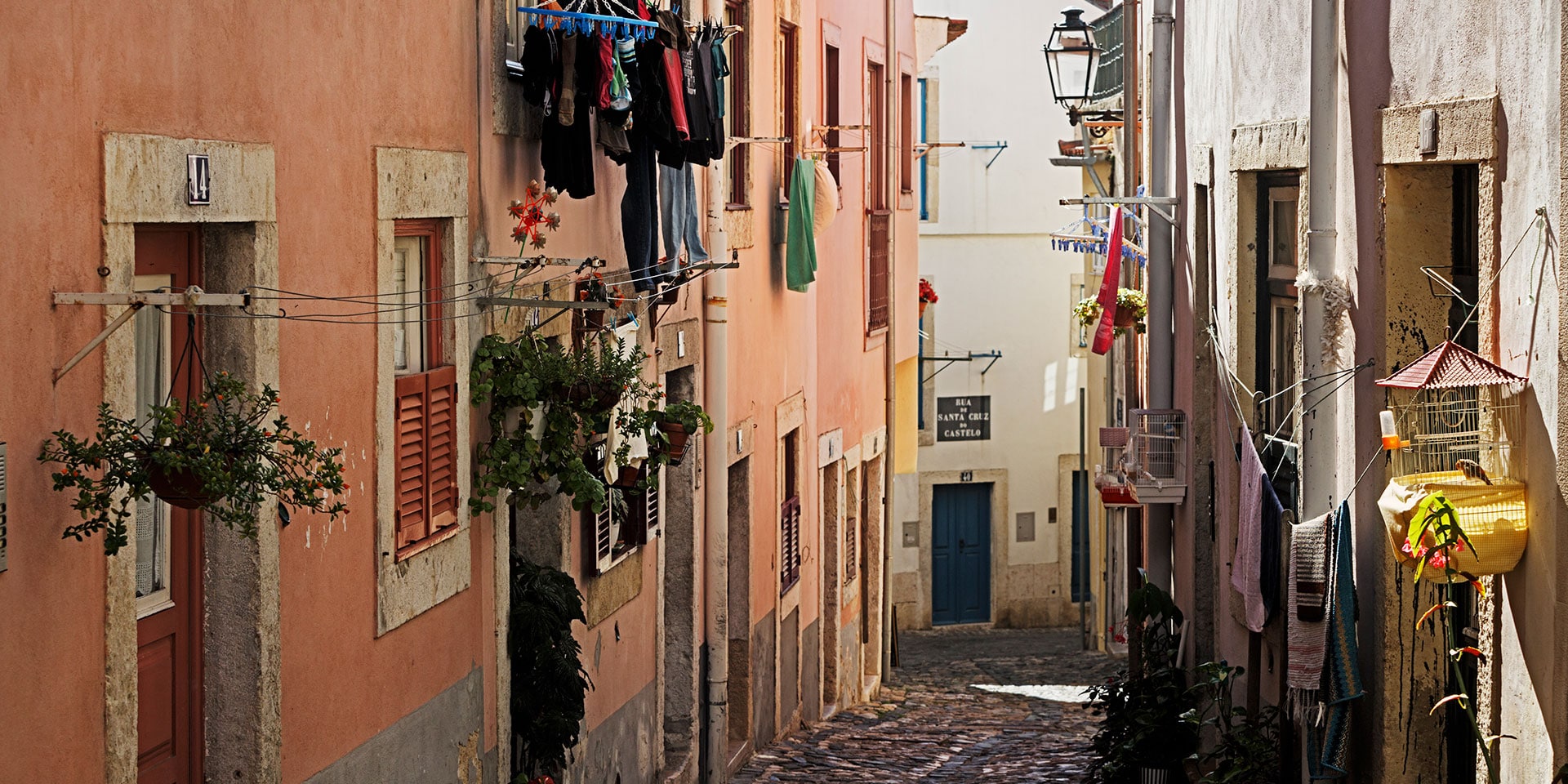
From painted tile facades and calçada sidewalks to steep and labyrinthine passageways, Graça’s infrastructure was deeply influenced by the Muslims of the Iberian peninsula and North Africa.
Walk off your lunch by (carefully!) navigating the narrow, cobblestone alleyways. Look up to catch glimpses of dramatic sunlight filtering between buildings and colorful laundry hung out to dry.
Depending on the day and time, you might stumble across a bar or restaurant with musicians playing traditional fado music. This working-class musical style, marked by mournful singing and a handful of stringed instruments, originated in Portugal in the 19th century.
After that, casually wind your way downhill toward Avenida Almirante Reis, a main drag that splits Alfama from the neighboring Mouraria district and connects to the metro.
Have a Dining Experience Like No Other
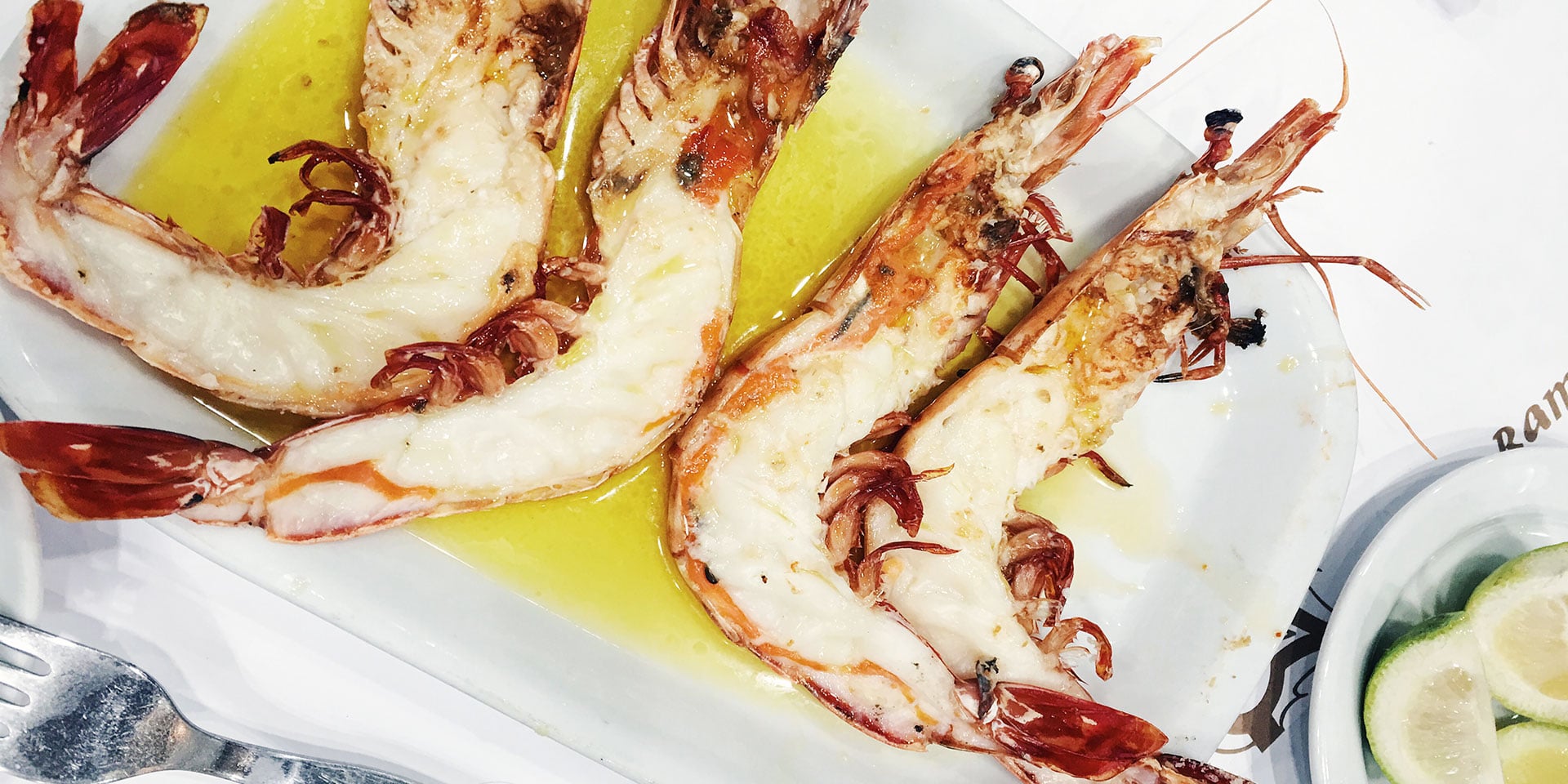
You’ve surely worked up your appetite by now, right? You’re in luck — because Cervejaria Ramiro is just down the hill from Graça in the heart of Mouraria. This always-busy seafood joint has long, family-style shared tables and brusque waiters who rarely have time to answer your questions, so you should be comfortable with a little improvisation.
The good news is there’s literally nothing bad on the menu; Ramiro has some of the freshest seafood around. It’s charged by the kilogram, though, so if you’re sensitive to price, keep count of how many shrimp you’ve stuffed into your face.
Bonus Round: Natas!
If you’ve still got a dessert-shaped hole in your stomach, consider stopping by a bakery to pick up a few natas on your way back to your hotel. These small, egg-custard tarts are creamy and just the right amount of sweet. You can find them all over town, but some of the best ones money can buy are at Pastelaria Aloma.
Aloma has a few locations in town, including its original location in Campo de Ourique, which is well worth the couple miles’ trip.





